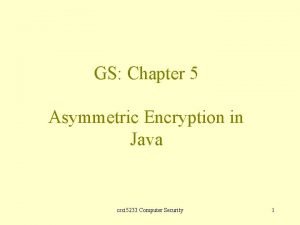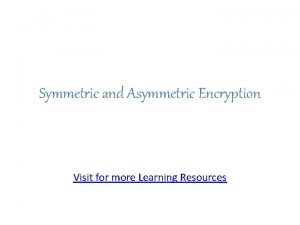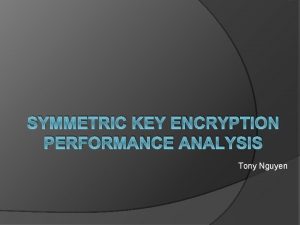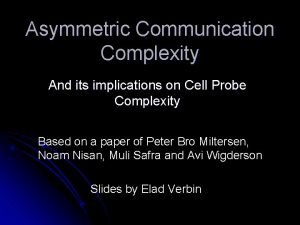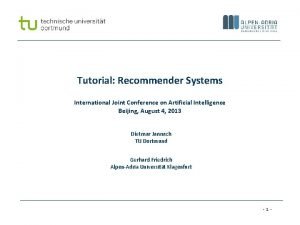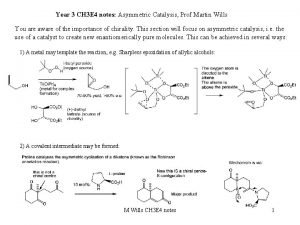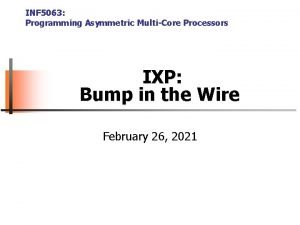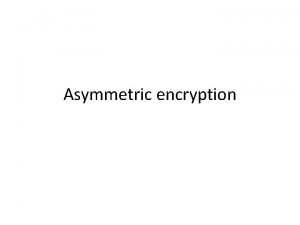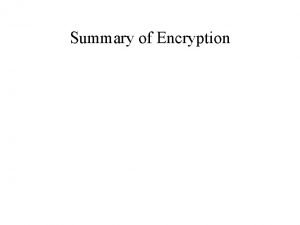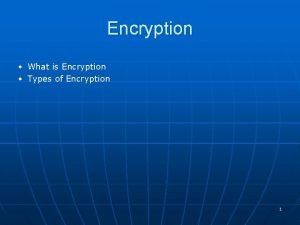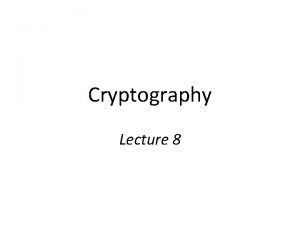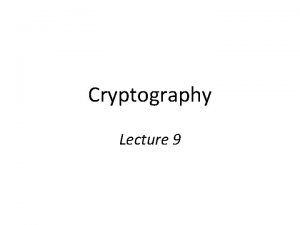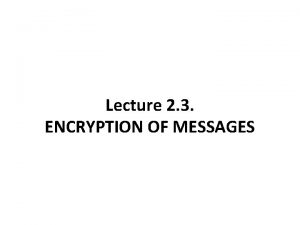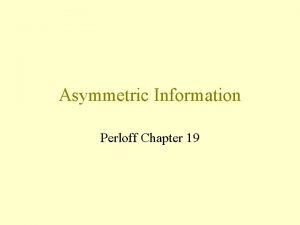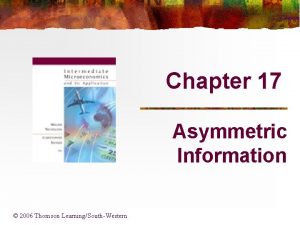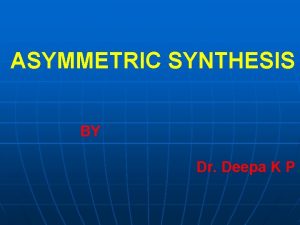Asymmetric Encryption CT 1405 Lecture 5 1 Asymmetric













- Slides: 13

Asymmetric Encryption CT 1405 Lecture 5 1

Asymmetric Cryptographic Algorithms • Weakness of symmetric algorithms • Distributing and maintaining a secure single key among multiple users distributed geographically • Asymmetric cryptographic algorithms • • Also known as public key cryptography Uses two mathematically related keys Public key available to everyone and freely distributed Private key known only to individual to whom it belongs 2

Asymmetric Cryptographic Algorithms (cont’d. ) Figure 11 -12 Asymmetric (public key) cryptography © Cengage Learning 2012 3

Asymmetric Cryptographic Algorithms (cont’d. ) • Important principles • • Key pairs Public key Private key Both directions • Digital signature • Verifies the sender • Prevents sender from disowning the message • Proves message integrity 4

Digital Signature • Used to provide: Data integrity, Message authentication, Non-repudiation Signer’s private key Signing message Signer’s public key algorithm message signature Unsecured channel Signature verification Ok / not Ok algorithm Signer Verifier 5

Digital Signature Figure 11 -13 Digital signature © Cengage Learning 2012 6

Asymmetric Cryptographic Algorithms (cont’d. ) Table 11 -4 Asymmetric cryptography practices 7

Asymmetric Cryptographic Algorithms (cont’d. ) Table 11 -5 Information protections by asymmetric cryptography 8

Asymmetric Cryptographic Algorithms (cont’d. ) • RSA • Published in 1977 and patented by MIT in 1983 • Most common asymmetric cryptography algorithm • Uses two large prime numbers • Elliptic curve cryptography (ECC) • Users share one elliptic curve and one point on the curve • Uses less computing power than prime number-based asymmetric cryptography • Key sizes are smaller 9

Asymmetric Cryptographic Algorithms (cont’d. ) Figure 11 -14 Elliptic curve cryptography (ECC) © Cengage Learning 2012 10

Asymmetric Cryptographic Algorithms (cont’d. ) • Quantum cryptography • Exploits the properties of microscopic objects such as photons • Does not depend on difficult mathematical problems • NTRUEncypt • • Uses lattice-based cryptography Relies on a set of points in space Faster than RSA and ECC More resistant to quantum computing attacks 11

Asymmetric Cryptographic Algorithms (cont’d. ) Figure 11 -15 Lattice-based cryptography © Cengage Learning 2012 12

Symmetric vs. Asymmetric 13
 Amir temur rasmi
Amir temur rasmi Asymmetric encryption java
Asymmetric encryption java Advantages of asymmetric encryption
Advantages of asymmetric encryption Symmetric vs asymmetric encryption performance
Symmetric vs asymmetric encryption performance Des aes
Des aes Symmetric key distribution using asymmetric encryption
Symmetric key distribution using asymmetric encryption 01:640:244 lecture notes - lecture 15: plat, idah, farad
01:640:244 lecture notes - lecture 15: plat, idah, farad Asymmetric communication
Asymmetric communication Symmetric and asymmetric matrix
Symmetric and asymmetric matrix Asymmetric dominance effect
Asymmetric dominance effect Asymmetric vlan
Asymmetric vlan Asymmetric vlan
Asymmetric vlan Asymmetric synthesis notes
Asymmetric synthesis notes Asymmetric multicore processing
Asymmetric multicore processing

